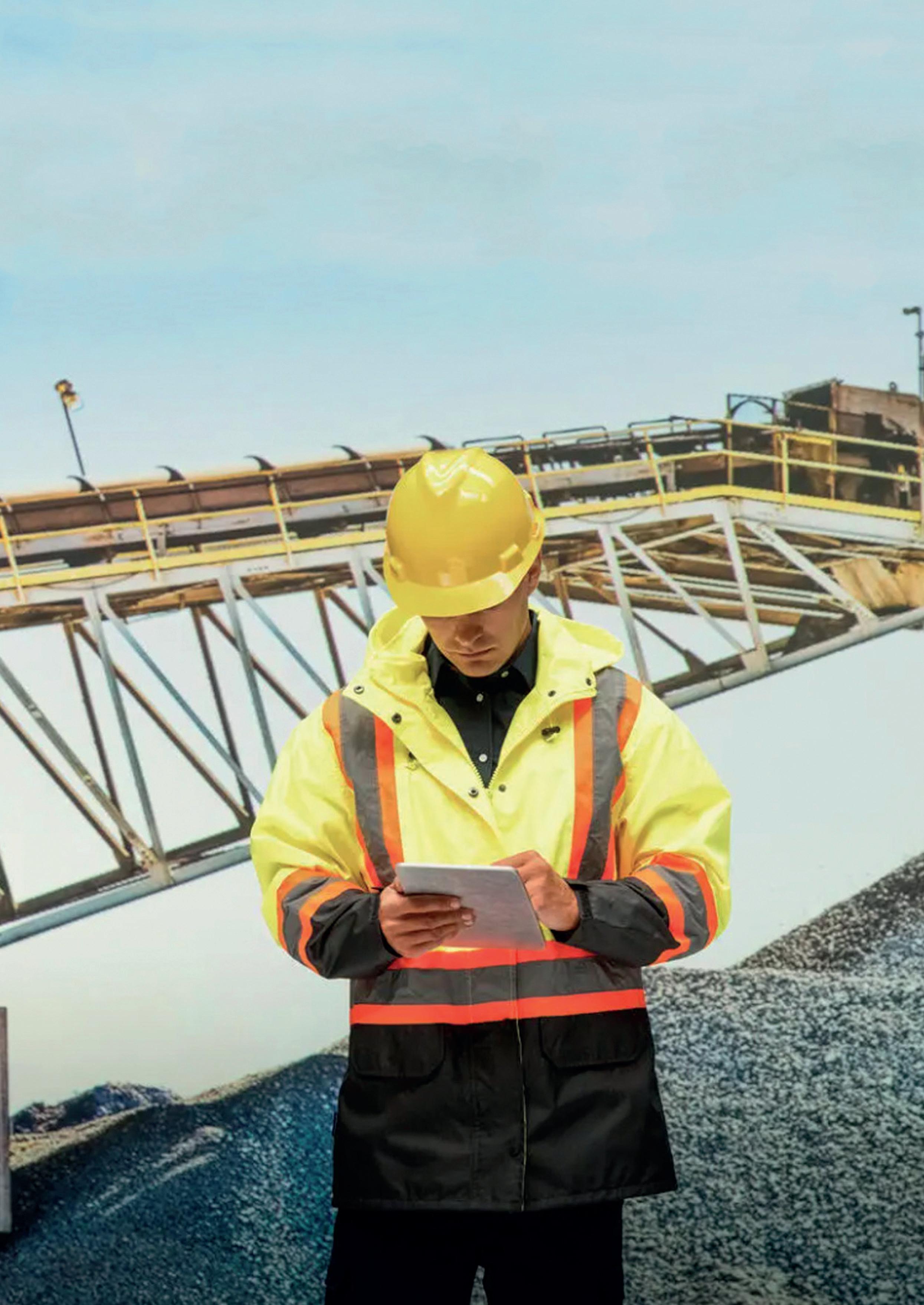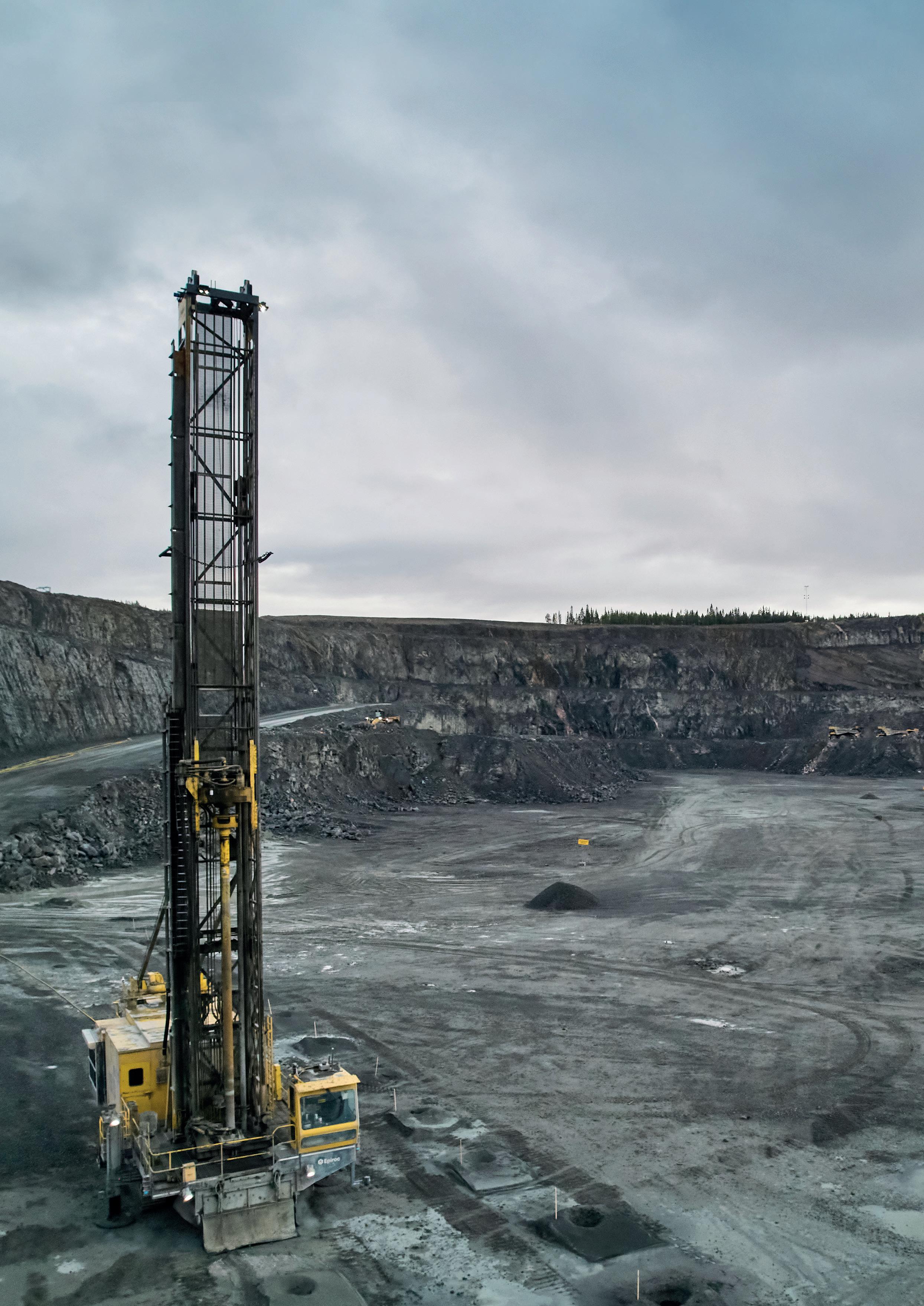
10 minute read
Global Challenges And The Hope For A Sustainable Future
Benedikt Sobotka, Eurasian Resources Group and the Global Battery Alliance, Luxembourg, considers how the commodities sector can adapt responsibly and sustainably to the challenges facing key mineral supply chains.
The world is changing, and the commodity sector is arguably undergoing its largest transformation in years, driven by the energy transition. While some new factors, such as supply chain issues, have been caused by recent events in Ukraine, others, such as the sources of supply or the definition of strategic materials, are fundamental.
This is the new reality and all commodity producers around the world are adjusting to it. Producers can no longer pick the best customer, the most profitable route, or the cheapest available material. Yet, it can be argued that this is the cost of improved long-term sustainability and the impact of global geopolitical uncertainty commodity producers have to adapt to. With the effects brought on by the COVID-19 pandemic, which have been exacerbated by the conflict in Ukraine, one thing is clear: the end of the era of cheap raw materials is being witnessed.

A new era for commodities
International sanctions have contributed to an unprecedented price surge of many raw materials. The prices of wheat, fertilizers, crude oil, natural gas and certain metals, including aluminium and copper, have all reached new highs since the start of 2022. Future larger price volatility is inevitable: many commodities with greater exposure to the crisis are vulnerable to acute shortages and could yet hit new records.
The fading pandemic and the tightening US monetary policy both still have the potential to deliver economic setbacks. However, persistent supply chain challenges, a changing inflation landscape and the energy transition should, overall, create a demand-driven environment for industrial commodities, including battery metals. Logistical costs are also soaring, as many companies are re-routing their cargoes. Midstream and downstream producers have also been impacted. Ukraine, for example, was a sizeable automotive parts supplier, home to more than 20 global automotive companies and more than 30 automotive plants.
The stage is set for cobalt to climb to new highs, as well. Cobalt’s 120% price surge through the course of 2021 shows that the market is severely short of the metal, which is so important to long-term global energy plans. Furthermore, there are no signs of any fundamental easing, with prices remaining on an upward trajectory.
Stepping back from material prices, the industry is also at the dawn of a new era in terms of sustainability. Urgent action must be taken to prevent catastrophic climate change, a fact that is now understood across: industries, populations, continents, and demographics. Governments, businesses, non-governmental organisations (NGOs), and citizens around the world are grappling to find ways to ensure that global temperatures do not rise more than 1.5˚C. Yet, if it is to be successful, the integration of sustainable long-term and short-term energy storage solutions into the energy system will be crucial. Energy storage may seem at first glance highly specific, but it is in fact the dynamo that powers the world. Long-term energy storage powers cities and economies, while short-term energy storage provides a guide across the planet and makes every aspect of daily life possible, from computers to cars to the phones in people's hands.
Putting batteries in focus
Much and more has been written about the shift away from unsustainable long-term energy generators and storage; talk of flexible grids powered by wind, solar power, and nuclear power is now de rigueur. The same urgent thought must be given to the key technology of short-term energy storage: the battery. Batteries have the single-handed potential to significantly reduce global carbon emissions. According to a 2019 study by the Global Battery Alliance (GBA), batteries have the potential to enable 30% of the required reductions in carbon emissions in the transport and power sectors by 2030.
Concurrently, the pace of electric vehicle (EV) adoption also shows few signs of losing momentum against the backdrop of the global transition to a greener future. There is a strong case to be made that future EV sales will continue to smash analysts’ expectations, empowered by governments’ ambitious adoption goals and manufacturers’ aggressive sales targets. Making the production of batteries sustainable and scaleable is of particular importance to the EV sector, which is projected to see 120 million vehicles on the road by 2030, according to the Internation Energy Administration (IEA) – EV demand is expected to grow by over 20 – 25 times, according to the IEA’s Sustainable Development Scenario. EV sales market penetration should exceed 50% by 2030, above most analysts’ expectations of around 30%. This will be driven by governments’ ambitious adoption goals and manufacturers’ sales targets.
Two concurrent trends emerge from this analysis. First, global trials and tribulations – from the hostilities in Ukraine to the pandemic, to global economic shocks, to scarcity – have created new and unique trends in the supply side for many raw materials. Second, the need, and thus the demand, for sustainable technologies are growing at feverish pace, backed by the knowledge that there is, in the long term, no other option but to embrace these technologies. And so, it quickly becomes clear that there is on the near horizon a fundamental inflection point, both for the industry and for the world.
In fact, batteries could enable nearly a third of the required reductions in carbon emissions in the transport and power sectors, create 10 million sustainable jobs, and provide access to electricity for 600 million people that currently lack access. While this presents an incredible opportunity for the mining and metals industry, with metals such as cobalt and copper forming key components of the lithium-ion batteries in EVs, it must be careful that the sustainability of the sector does not suffer as a result. Shortages of palladium and platinum, in conjunction with high oil prices and energy security concerns in the West, are likely to accelerate the pace of EV adoption, with governments likely to roll out additional incentives for EV buyers, in order to reduce their exposure to Russian oil supplies.
Managing ESG risks
All the while, the production of a rechargeable EV battery poses significant social and environmental risks. At every stage of the process, right the way from the mine to the electric vehicle, issues such as child labour, poor working conditions, and carbon dioxide (CO2) emissions can significantly impact the overall sustainability of the product.
One of the major difficulties with reducing the environment, social, and governance (ESG) impact of the battery supply chain is a lack of a standardised global reporting framework that covers the entire chain. Without establishing harmonised principles for digital traceability, access and transparency, companies and nations cannot be easily held accountable for their actions, nor can the sustainability of the final product cannot be guaranteed to the end consumer.



Another difficulty is the significant pressure placed on certain supply chains, leading to higher prices and a shortage of materials. The fact that developing new projects entails a long lead time, and that many untapped mineral deposits are in underdeveloped locations with higher risk profiles, is a challenge for both the supply chain and for customers.
It has the potential for becoming a vicious cycle as well. If a supply chain is pushed too hard, ESG compliance problems will arise – for example, child labour issues associated with cobalt production – because operators start to scale up production too quickly and subsequently stretch the rule book too far. It is very important that the industry takes steps to make sure that this does not happen.
The case for clean cobalt
This brings the discussion back to cobalt. Cobalt is essential for electrification, used in lithium-ion batteries powering EVs and electronic devices. Copper and cobalt are set to experience tighter fundamentals as a result of the conflict in Ukraine, which has undoubtedly added to pre-existing supply pressures in both markets. Other factors supporting cobalt demand include increasing demand for mobile electronics, e-mobility, battery energy storage systems, and other end-use sections. Additionally, demand from traditional cobalt end-use sectors is expected to increase this year, driven by recovery of aerospace sector. In short, cobalt supply will not keep up with demand, given that the development of mining projects takes 10 – 15 years on average. On the other hand, battery production capacity is set to quadruple between 2020 and 2025, according to Benchmark Mineral Intelligence (BMI).
Meanwhile, according to the Cobalt Institute, almost 70% of the world’s cobalt is currently produced in the Democratic Republic of the Congo (DRC), a country where artisanal and small scale mining is often linked to child labour; thus, the increased demand, funnelled through political and social urgency, makes the situation all the more finely balanced. Eliminating these issues and creating a long-term, sustainable value chain is essential if the mining industry and its down-stream products, such as batteries, want to be a major part of the solution to climate change.
So, how does the industry achieve that which is a necessary shift and a long-term solution, when there are serious short-term and systemic roadblocks in the path? The solution is cross-organisational frameworks and collaboration. Long strides towards this goal have already been taken. Mitigating these risks is the primary objective of the GBA, which brings together leading international organisations, NGOs, industry actors, academics, and governments to drive systemic change along the entire value chain. It now comprises more than 100 members, including BASF, Tesla, UNICEF, the OECD, and Eurasian Resources Group. If scaled up in a responsible manner, the battery value chain can not only support the fight against climate change, but also create new, safe jobs; add economic value; and safeguard human rights in line with the UN Sustainable Development Goals. For instance, at the GBA, public and private organisations are working together to create a ‘Battery Passport’ that will act as a quality seal for the industry and increase transparency across the supply chain. The GBA also recently partnered with a German consortium to launch a ‘Battery Pass’, which will provide a solution for securely sharing information and data across the battery value chain, laying the foundations for a new generation of sustainable batteries in Europe.
Cross-organisational initiatives, such as the GBA’s recent Cobalt Action Partnership, are key to joined-up communications and operations across sectors and geographies. The Cobalt Action Partnership conducted activities to mitigate these risks, including through engaging with international stakeholders on responsible cobalt production practices, identifying best practices within artisinal and small scale mining supply chains that could be replicated and scaled, and leveraging funds to address the root causes of child labour and forced labour. The partnership focused on driving investment and engagement toward on-the-ground projects, and facilitated multi-stakeholder dialogue for sharing, learning, and collaboration.
Conclusion
Throughout the entire lifecycle of these products – from raw battery materials, like cobalt and lithium; to production processes, like mass-manufacturing of batteries; to sale and use, such as in electric vehicles – these supply chains have the potential for both harm and good. The battery’s value chain is the exemplar of this in microcosm. This includes improving the end-use of batteries by promoting circular design improvements, encouraging the harmonisation of national and international rules to improve lifecycle management, and ensuring stronger market incentives toward circularity.
And policy makers have their role to play, as well. Their role must be to recognise, encourage, and reward compliance with global production standards. All metals need to be established as ‘critical’ and sustainable mining practices, remining requirements, and land restoration requirements all need to be put in place. Especially given previous scepticism from the public about mining practices, there must be a real focus on rigorous environmental performance requirements, sustainable and ethical production, monitoring of those requirements, and the availability of financial resources to address the impacts of mining and to ensure the recovery of materials during mineral extraction.
These initiatives will take time, effort, patience, and drive. Yet the rewards are vast – and more than vast, they are necessary. Amongst their ranks must be included such concepts as a fairer world, a liveable world, a sustainable economy, a healthy planet, and a just international system. These are worth striving for – in both the mining industry and the world in general.










